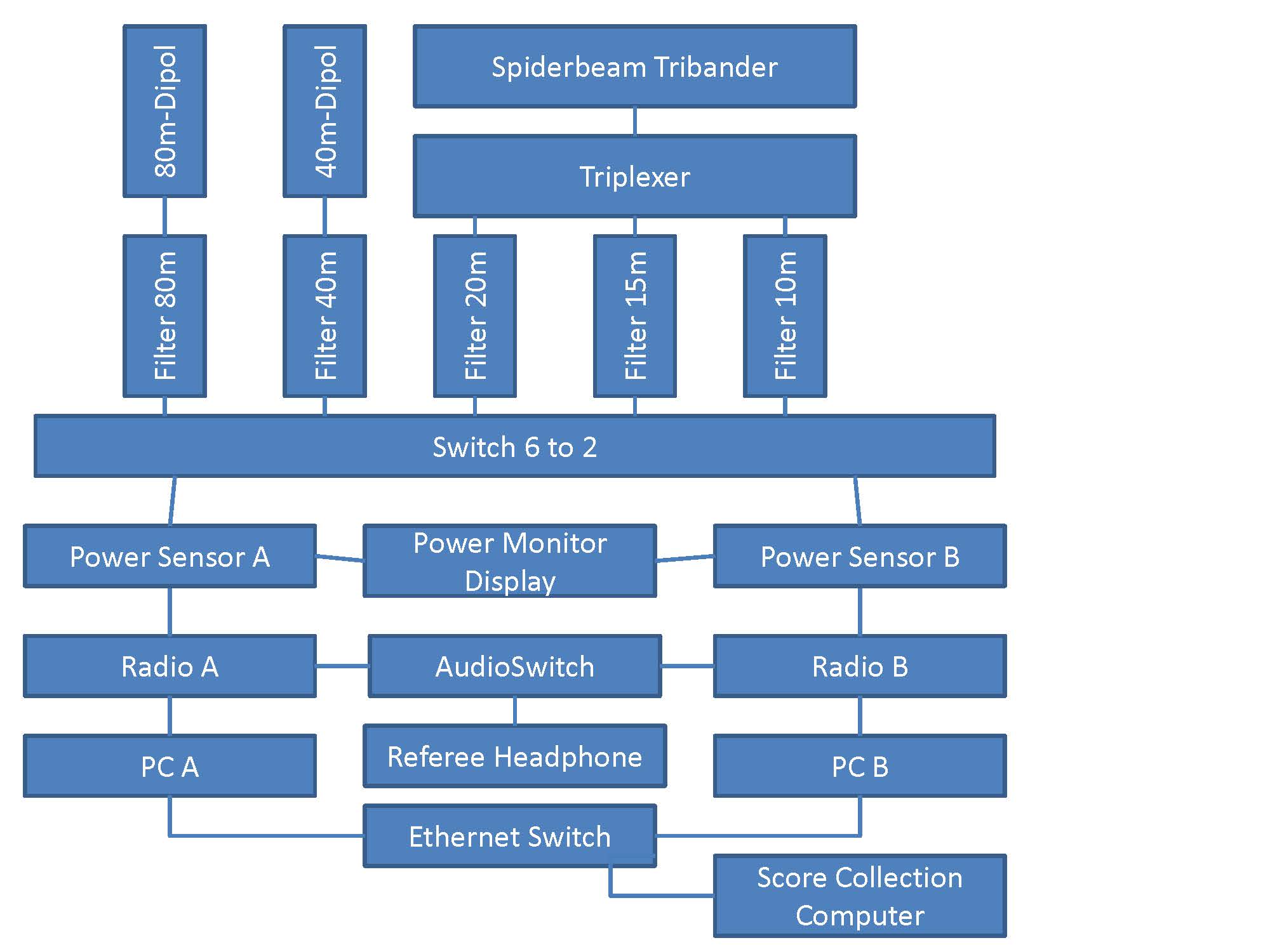WRTC Rules
Below are the official competition rules for WRTC 2018.
| WRTC 2018 Competition Rules Download: Download Rules |
| WRTC 2018 Competition Q&A Download: Download Q&A |
Station Description
This document describes the equipment that will be provided to teams for WRTC2018.
All competitors will be located in the same geographical region with similar topography. Competitor locations will be separated by a minimum of 1,000 meters.
WRTC2018 will be a Field Day style competition. Equipment that will be installed by the organizers at each site:
- 12m mast tower with an antenna rotator and control unit
- Spiderbeam 20/15/10 m with one feed line (50 meters of M&P Ultraflex 7) and PL-259 male connector
- 40 m shortened dipole (integrated in the Spiderbeam boom; 90° off) with feed line (50 meters of M&P Ultraflex 7) and PL-259 male connector
- 80 m Inverted-V dipole with feed line (50 meters of M&P Ultraflex 7) and PL-259 male connector (dipole ends can be changed manually to get best VSWR on CW or SSB segment)
- WRTC2018 Two-channel Power Monitor: The power monitor acts on forward power only, which may be greater than the actual transmitted power when the SWR > 1:1. In order to transmit 100 Watts to an antenna off the resonant frequency, an external tuner may be used to bring the SWR down and avoid premature triggering of the power monitor
- 2 x 1 meter coax jumpers, PL259 on each end for connecting Power Monitor
- Ethernet switch incl. connection cables
- Tent 4.6 meters x 2.7 meters x 2 meters high
- Wood panels under chair and tables
- 2 KW Power Generator (Honda EU20i) with power cable going to the tent
- No Uninterruptable Power Supplies, 12 V accumulator batteries or similar power sources are allowed for power backup. Exception: built-in batteries in portable computers, audio recorder, or other peripherals. CMOS memory backup batteries are allowed.
- Gasoline for generator
- Ground wire connected to ground rod driven near cable entrance to tent
- 2 x 6-outlet 230 VAC power outlet strips (see also https://en.wikipedia.org/wiki/Schuko) *
- 2 electric lamps (manual) *
- 2 electric fans (manual) *
- No additional electric cooling devices are allowed such as air conditioners or refrigerators. Additional fans may be used, but be aware of the power consumption of the generator.
- 2 folding tables (1.8m x 0.75m each)
- 3 chairs *
- WC cabin with hand wash facilities
- Drinking water *
- Food and snacks *
Competitors are not allowed to substitute any equipment except for those items marked by an asterisk. Key components are shown here.
Since this is a field day style operation each team will have a generator which has to be filled with gasoline. To avoid team members spending their time re-filling the generator, the organizers will provide dedicated volunteers at every location to ensure the generator is kept running during the contest period.
Triplexer
It is highly recommended, but not required, that each team provides a “triplexer” device for the triband antenna. The function of the triplexer is to provide discrete band outputs using one coaxial feed. This allows operation of the tri-band antenna on two bands simultaneously.
It is up to the team to provide such a device, but it must not amplify the signal in any way.
There are several commercial manufacturers of triplexers.
For details on building your own triplexer, refer to June 2010 QST “HF Yagi Triplexer Especially for ARRL Field Day” by K6KV.
Station Layout
A typical connection diagram of a WRTC station is shown here:

